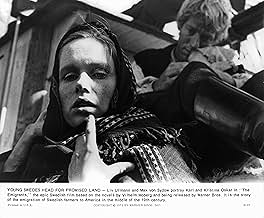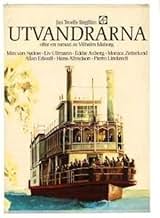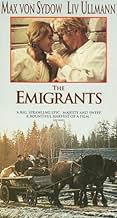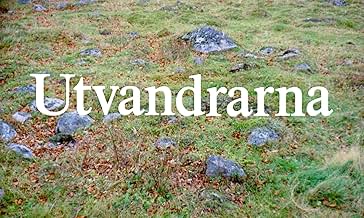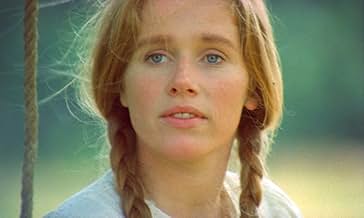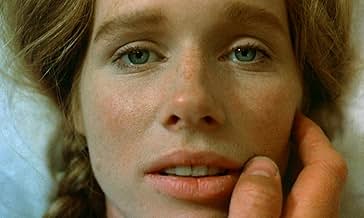Aggiungi una trama nella tua linguaSmåland, Sweden, mid-19th century. A farming family struggle with their rocky, unyielding land, and decide to embark on the arduous journey to new hope in America.Småland, Sweden, mid-19th century. A farming family struggle with their rocky, unyielding land, and decide to embark on the arduous journey to new hope in America.Småland, Sweden, mid-19th century. A farming family struggle with their rocky, unyielding land, and decide to embark on the arduous journey to new hope in America.
- Candidato a 5 Oscar
- 8 vittorie e 11 candidature totali
- Nils
- (as Svenolof Bern)
Trama
Lo sapevi?
- QuizWhen filming the scene towards the end, where Karl Oskar walks off to find a better place for his settlement, director Jan Troell forgot to yell, "Cut." Max von Sydow just kept walking and walking, waiting for a "cut", and nobody realized until they took lunch.
- BlooperOn the train west a character shows an American silver coin and yells out it has "In God We Trust" on it. The scene is the 1850s and the motto was not added to American silver coins until 1867.
- Citazioni
Arvid: What do you think it will cost to ship us there?
Robert: Around 200 riksdaler.
Arvid: Ya, well, might as well forget it. 200 riksdaler. I'll never have that much.
Robert: You don't have it?
Arvid: I will go anyway. We can travel to America on foot.
Robert: Nah, there's an ocean. You can't go on foot to America.
Arvid: Do you mean there is no way?
Robert: I'm afraid there is not. America is an island.
Arvid: Damned ocean.
- Versioni alternativeThe USA television version, retitled "The Emigrant Saga", consists of this film plus its sequel, La nuova terra (1972), joined and re-edited together in chronological order and dubbed in English.
- ConnessioniEdited into Spisok korabley (2008)
The first part of the film details the challenges these people face that make them want to emigrate in the first place. An oppressive village hierarchy in which all laws and rules of accepted behavior are arbitrated by a self-appointed few, as well as conditions that make farming a constant struggle, leave them craving the freedoms and fertility of the mythic U.S. The second part of the film is a meticulous recreation of what the actual journey was like, including a long segment about the miseries of crossing the Atlantic Ocean (including sea sickness and lice), and the interminable trek up the Mississippi River to Minnesota once they landed. It's almost impossible to wrap your head around how frightening this entire experience would have been for them. These people knew almost nothing about the world outside of their small Swedish village (one young man doesn't even know how the ocean works and thinks they're all going to drown if the water rises) and trust themselves to strangers who don't speak their language or really have any reason to look out for their interests. It's a fascinating film and feels more like a documentary than a fictional narrative.
Unfortunately, the only version I was able to see was the dubbed one shown by TCM. I would have much preferred to see it subtitled so that I could experience von Sydow's and Ullmann's performances as they were meant to be experienced.
"The Emigrants" was nominated for Best Foreign Language Film at the 1971 Academy Awards, and then because of Oscar's weird eligibility rules popped up again a year later with four nominations, for Best Picture, Best Director (Jan Troell), Best Actress (Ullmann), and Best Adapted Screenplay. At the time, it was only the third foreign language film after "Grand Illusion" and "Z" to receive a Best Picture nomination. And the film's sequel, "The New Land," was up for Best Foreign Language Film the same year that "The Emigrants" was in the Best Picture race. Good couple of years for director Jan Troell.
Grade: A
- evanston_dad
- 9 ott 2018
- Permalink
I più visti
- How long is The Emigrants?Powered by Alexa
Dettagli
Botteghino
- Lordo Stati Uniti e Canada
- 1.156.554 USD
Contribuisci a questa pagina


